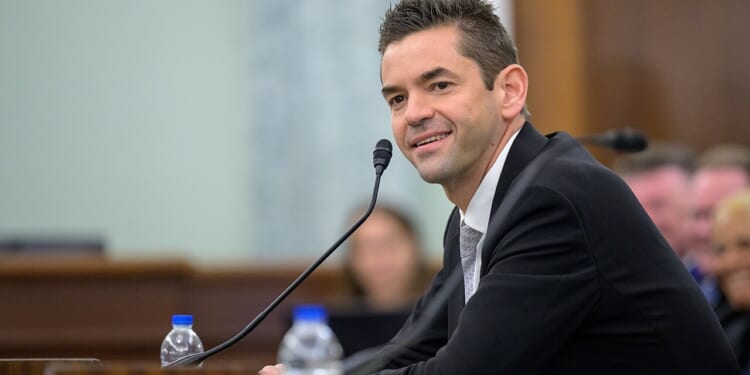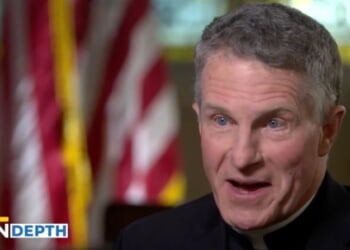Trump’s nomination of space entrepreneur and former astronaut Jared Isaacman to lead NASA is surprising, considering Isaacman’s withdrawal from consideration months ago amid right-wing infighting.
In a typical turnaround, President Donald Trump nominated Jared Isaacman to be the next NASA director on Tuesday evening. This comes after Isaacman, a literal astronaut who has spent his career in and around the aviation sector, was originally announced months ago—and then had his nomination pulled after right-wing activist Laura Loomer meddled in his nomination process.
According to Loomer, Isaacman had a set of skeletons in his closet that made him unworthy of the NASA director position. (Of course, Isaacman had already disclosed these unfortunate bits of his history to the Trump team even before he was formally nominated.) She ultimately buggered off this line, but the damage had been done.
Isaacman an Early Casualty of the Trump-Musk Dispute
What really happened, though, was that Isaacman, a business associate and ally of Elon Musk’s, got caught up in the breakdown in the political alliance between Musk and President Trump earlier this year. As a result, all things that Musk had touched were thrown into the rubbish heap—including the nomination of Isaacman to the role of NASA director.
After Isaacman was bullied into withdrawing by vengeful right-wing online personalities, the role went over to current secretary of transportation, Sean Duffy, who had his own problems with Elon Musk from the short time that Musk was involved with the DOGE effort.
Duffy took over NASA temporarily and began firing large numbers of people. He announced he was placing a nuclear reactor on the moon—with no plan on how to get it up there or understanding how much it would cost. Duffy then stated he was intending to have his Transportation Department absorb NASA, ending its existence as its own, independent government entity.
More importantly, as a blatant act of political revenge, Duffy began calling for NASA to diversify its contracts away from Musk’s innovative SpaceX and toward many others.
Yes, diversification is needed. One never wants to place all their proverbial eggs in one basket. But in the case of NASA and SpaceX, when the window for beating the Chinese back to the moon in the new space race is so narrow, one does not want to remove the country’s best rocket company from the mix simply because of a political spat. That is what was happening.
Isaacman’s “Athena” Plan Put Him Back in the Running
Then came the release of a 62-page document that would have served as Isaacman’s blueprint for taking NASA into the new century—and keeping ahead of America’s rivals, such as China.
Called the “Athena” Plan, and designed to streamline contracting processes within NASA’s bloated bureaucracy that would have, in turn, greatly enhanced innovation (to ensure NASA remained ahead of its rivals), Isaacman’s allies began floating the document around to showcase what his leadership would have looked like.
And it came at a moment in which Duffy was fighting hard to cement his leadership role over at NASA. To better ingratiate himself with an understandably skeptical space community—after all, Duffy has no professional background in space or engineering more generally—according to ArsTechnica, “Duffy has been building ties with the space industry, trying to paint Isaacman as someone who would come in and force big changes on NASA and its traditional space contractors. There is an effort to paint Isaacman as a stooge of Elon Musk and his company, SpaceX.”
This gels with original reporting that I wrote about in these pages months ago. Essentially, Duffy, who was correct in not wanting NASA to become overly reliant on only one launch vendor (in this case, SpaceX), went way too far. Rather than seek to diversify NASA’s launch contracts for the good of the country—and for the taxpayer—he conflated his own personal ambition to remain head of NASA through at least the proposed lunar flyby of Artemis II succeeded (and he could be remembered by history as the NASA director under whose leadership America returned to the moon).
Isaacman, an industry insider—who came from the startup world, though—understood the way in which the traditional NASA contractors were abusing their oversized role in NASA and stymying innovation (thereby degrading NASA’s overall mission and exacerbating cost-overruns and increases in mission failures).
As I wrote in my 2020 book, Winning Space: How America Remains a Superpower, “being cheap and easy in space is a good thing.” Whether you like Elon Musk or not, the fact remains that SpaceX remains the greatest, most cost-effective private space firm in existence today. Until that changes, and because NASA must beat the Chinese to the moon (who plan on having a permanent manned presence on the moon’s southern pole no later than 2035), NASA must continue looking to SpaceX.
What’s more, NASA must more generally look beyond the usual big space contractors and more toward the private space startup sector, which, as SpaceX has proven, is usually far more innovative and cost-effective than the bigger guys. Duffy was aligning himself with those bigger guys, who want nothing to do with cost-saving or innovation (because it’ll harm their bottom line).
Trump Restored Isaacman—and NASA Is Better for It
And for that Duffy deserves to be pushed out as interim NASA director. The re-selection of Jared Isaacman is a godsend for America’s ailing national space program.
Duffy wasn’t all bad. He did do some good. And he should get credit for that. But the final straw was in his cynical alignment with forces inimical to necessary innovation and cost-saving measures just to implement his own selfish political agenda. Isaacman, on the other hand, is clearly a mission-oriented man who has a fundamental—energetic—understanding and love for space exploration. That is what is needed in a NASA director.
Yet, the fact that Trump has been forced to reverse his decision about Isaacman and throw his longtime friend and political ally, Duffy, under the reusable rocket in the process shows how uneven Trump’s second term has been.
Whether it be failing to address the affordability crisis or end the Ukraine War “on day one,” Trump appears scattershot and indecisive. Thankfully, his decision to reverse course on Isaacman will pay dividends for this country’s space program for years to come.
About the Author: Brandon J. Weichert
Brandon J. Weichert is a senior national security editor at The National Interest. Recently, Weichert became the host of The National Security Hour on America Outloud News and iHeartRadio, where he discusses national security policy every Wednesday at 8pm Eastern. He is also a contributor at Popular Mechanics and has consulted regularly with various government institutions and private organizations on geopolitical issues. Weichert’s writings have appeared in multiple publications, including The Washington Times, National Review, The American Spectator, MSN, and the Asia Times. His books include Winning Space: How America Remains a Superpower, Biohacked: China’s Race to Control Life, and The Shadow War: Iran’s Quest for Supremacy. His newest book, A Disaster of Our Own Making: How the West Lost Ukraine is available for purchase wherever books are sold. He can be followed via Twitter @WeTheBrandon.
Image: Wikimedia Commons.

















